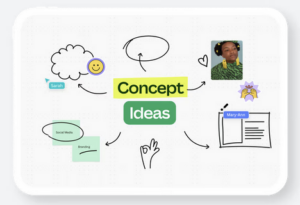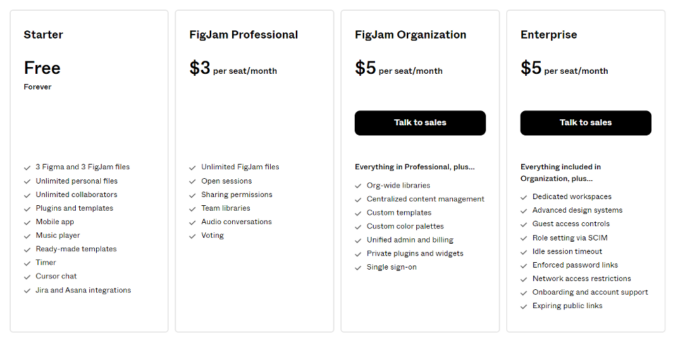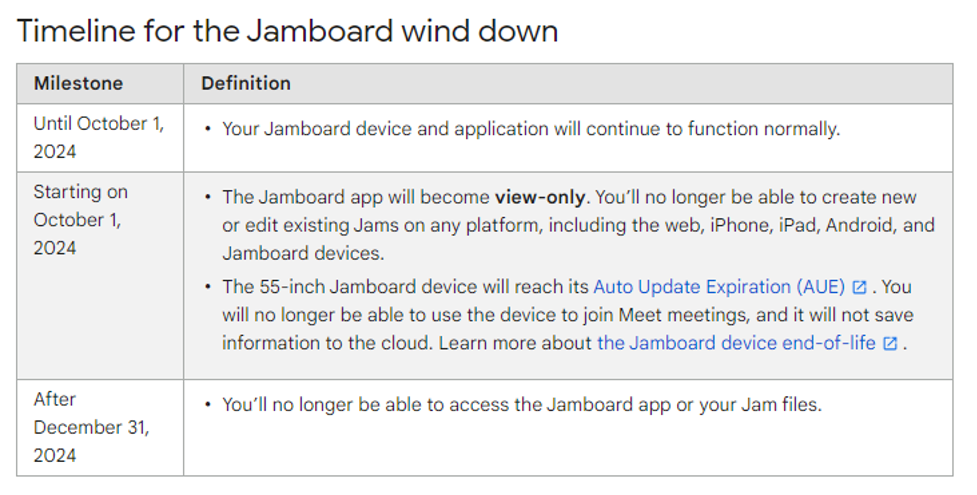As Jamboard Sunsets, What Is on the Horizon?
By Kathleen Palmieri

At that time Google stated “Jamboard is intelligently designed to speed up collaboration among your teams with a 55-inch 4k display that features a best-in-class touch response time. Combine this with a built-in HD camera, speakers and Wi-Fi, and you’re set up to collaborate and broadcast your work globally with Hangouts.”
In addition, educators benefited as Jamboards could be created for free – independent of their expensive display – and used in classrooms for lessons and collaboration. The Jamboard app offered the ability to insert Google documents, pictures, charts, and other apps from Google Drive to create interactive Jamboards. Students could sign on with ease using their Google accounts. The tools that were offered included Sticky notes for participation, pens for quick responses, and tools that were engaging and ignited learning in the classroom.
Goodbye, Jamboard
I wrote about Jamboard several times here at MiddleWeb. Then Google announced that Google Jamboard would no longer be available after December 31, 2024. What does this mean for teachers?
As with all technology and advances, it doesn’t take long for something better to come along. Other interactive whiteboard tools such as FigJam by Figma and Lucid Spark by Lucid proved to offer more capabilities and advanced tools for use.
Google has reported, “We’re working with FigJam by Figma, Lucid Software, and Miro on migration paths for existing Jams so you don’t lose your old work. Jamboard users can immediately start taking advantage of the new whiteboard technology on mobile, the web, within Google Meet, and on Series One devices. In addition to deep integration with Google Meet, users can also expect to see these whiteboard tools further incorporated into Google Workspace apps, including Drive, Calendar, and Docs.” (https://support.google.com/)

What I discovered about FigJam
I decided to try out FigJam as it is free for educators and students, with required verification. Unfortunately, as of this writing, Figma, owners of FigJam, do not have New York’s Edlaw 2D agreement in place, and until they do I can’t sign up with my school address. I decided to check out FIgJam and see what it offered using my personal Google account. The first thing I found was that the homepage stated, “FIgJam is the new Jamboard. Protect your Jamboard files by switching to FIgJam. Our import tool makes migrating easy.”
Sure enough, below this statement was a button to try FIgJam for free. Once I clicked the button the following pricing screen came up:

Creating a blank whiteboard is easy by simply clicking on the FIgJam board button located in the upper right corner and selecting the team, or if you are in the team and select the FIgJam board it will create the board. There are also many templates you can choose from to insert or create your board from one of the templates. There is an AI Generator for the template button.
FigJam’s tools improve Jamboard options
Migrating from Jamboard is easy, and you will have access to all the same tools such as Sticky Notes, pens, shapes and images. While FIgJam offers the tools used on Jamboard, each one is an improvement. An example is the pen tool offering more colors and a color dropper which allows you to select color from an image to use in your work.
Erasing is also much easier with FIgJam as you only have to tap the eraser on text or an image and it is gone. With Jamboard you had to move the eraser in order to get rid of a notation or image.
Other improvements include different styles of Sticky Notes and fonts, bold one word, use connectors with shapes, and create diagrams. You can readjust pictures, add borders, and access other design elements such as Washi tape. Adjusting the size of templates is simple with scaling capabilities, and new templates can be easily made.
FIgJam can be shared just as Jamboard is – using a link in a Google Classroom. One of the improved features in FIgJam is that students must sign in before they can get to a FIgJam. This prevents fooling with others’ work or posting anonymously.
After doing a bit of exploration, I found this YouTube video above, Transition from Jamboard to FIgJam: A Teacher’s Guide to Your New Favorite Classroom Whiteboard, which offers a nice introduction to FIgJam tools and use.
Tips from Google on transitioning
Google has provided a “Timeline for the Jamboard wind down” and has stated, “In addition to enabling users to proactively export their Jams, before the end of 2024 we will also automatically convert any remaining Jams to PDF files and save them to each users’ Google Drive, in the same place they were originally stored. This will not require any further input from users and helps ensure Jam files are converted, not deleted. We will share more information on automatic conversion in the coming months.”
Google has also provided tips for what to do to prepare Jams, digital whiteboard solutions, and suggested alternatives to Jamboard. Take the time to test out different apps and weigh the pros and cons of what they offer.
Kathleen Palmieri is a National Board Certified Teacher and NBCT Professional Learning facilitator. She is a fifth grade educator in upstate New York who reviews and writes regularly for MiddleWeb. With a passion for literacy and learning in the classroom, she participates in writing workshops, curriculum writing endeavors, and math presentations. As a lifelong learner, Kathie is an avid reader and researcher of educational practices and techniques. Collaborating with colleagues and globally on X (formerly Twitter) and expanding her education adventures at www.kathleenpalmieri.com are ongoing practices.
Feature image from FigJam k-12


































